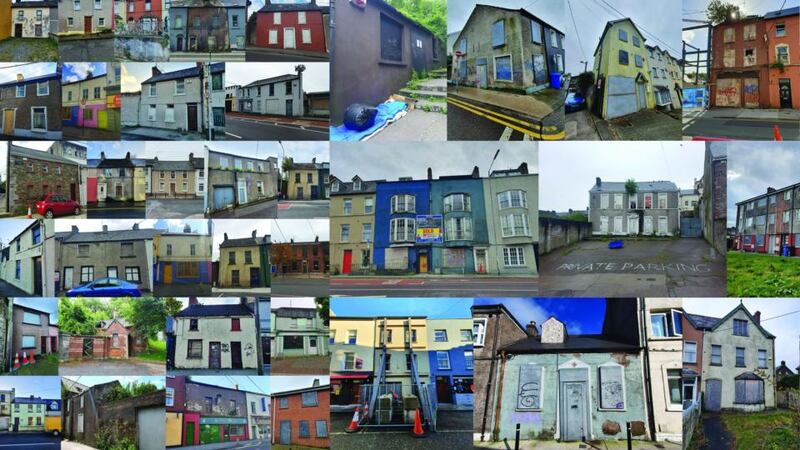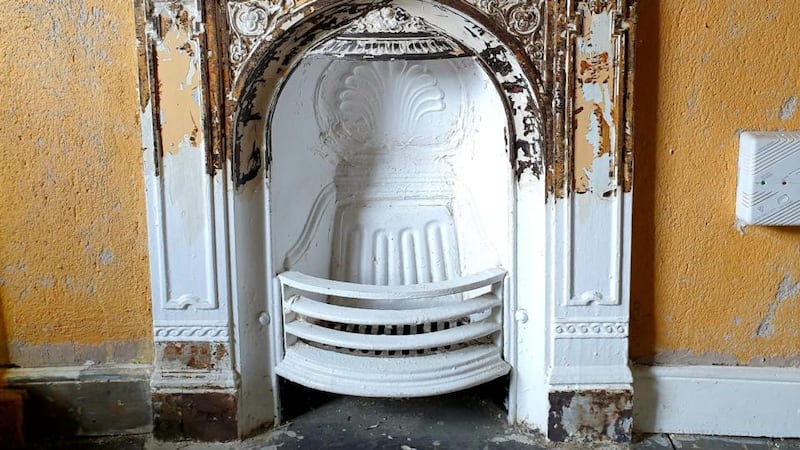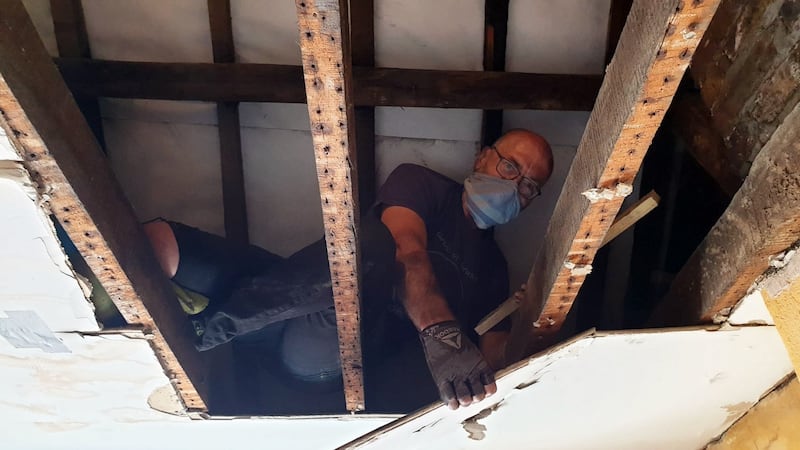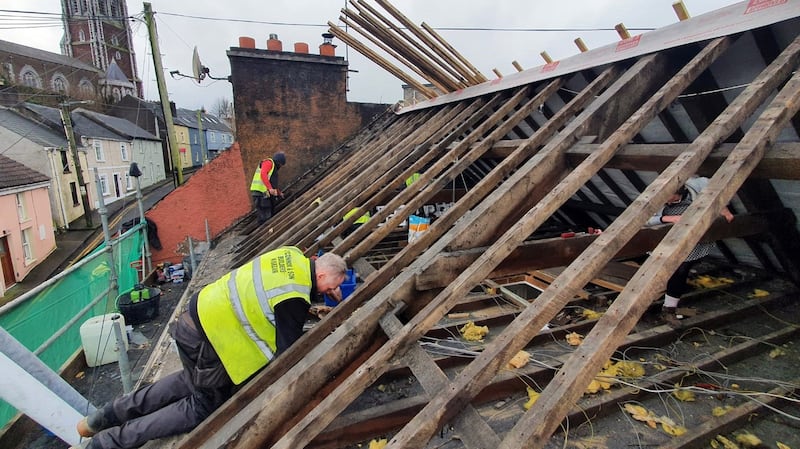There is hardly a town or village in Ireland whose main street isn’t blighted by vacant or derelict residential and commercial buildings – and there are pockets of dereliction in our major cities as well. Sometimes, significant historical buildings are crumbling before our eyes yet nothing seems to be done about it. Now, two recently returned Irish emigrants are drawing attention to boarded-up buildings, hoping local authorities will take a more proactive stance in tackling urban dereliction.
Jude Sherry and Frank O'Connor sometimes describe themselves as urban explorers. The couple, who moved back to Ireland from Amsterdam in 2018, began documenting the dereliction in Cork city when they arrived and have since spawned a countrywide movement of people highlighting dereliction in our villages, towns and cities.
“When people saw what we were doing, they started noticing the levels of dereliction in their towns. And once you see it, you can no longer not see it,” explains Sherry, who has a degree in industrial design and a master’s degree in environmental management.
O’Connor, who has a PhD in eco-design, posted daily photographs of derelict buildings on Twitter from June 2020 to June 2021. In total, he documented 450 properties all within a 2km radius of Cork city centre that the couple saw on their regular walks across the city.
“Dereliction erodes communities and the environment. It destroys livability, safety, health, beauty and wellbeing. Photographing the dereliction is a powerful way to bring the agenda forwards,” says O’Connor. “We were particularly interested in the old industrial area – workers’ houses and cottages rather than big stately homes,” adds Sherry.
Housing and homelessness
As O’Connor’s Twitter posts gained traction, groups in Limerick, Sligo and Dublin joined in, photographing and posting derelict buildings in their areas using #derelictireland. Soon, there were photos of derelict buildings from almost every county in Ireland, resulting in an awareness-raising exercise.
“We were shocked by the housing and homelessness crises and the levels of vacancy and dereliction when we came back to Ireland. We feel that we are losing the uniqueness of Irish towns through long-term dereliction,” says Sherry.

On their walks around Cork city, the couple spoke to people about the derelict properties they encountered and began seeking out publicly available information. “The problem is that we have all grown up with dereliction so it has been normalised,” says Sherry.
She believes there are a number of myths preventing these buildings from being sold or put back into use.
“People say planning is a problem but of the 150 properties we researched in detail, we found 73 per cent had let planning lapse, about 24 per cent had open planning and only 5 per cent were refused planning permission.” They found only half of these 150 properties were in architectural conservation areas, and only 10 per cent of them were protected structures – both factors which are often perceived as barriers to renovation or re-use.
They argue that the Derelict Sites Act 1990 is not being fully enforced. They discovered that most of the sites they documented were not on the Derelict Sites Register. When a site is unregistered, the local authority can’t impose the derelict site levy of 7 per cent of the property’s market value on the owner. This means the owner isn’t being penalised for letting the property become even more derelict and the local authority isn’t collecting money which could potentially be used to prevent further dereliction.
Heritage and materials
Sherry and O’Connor, who run the sustainable design agency anois.org, put together a report called This Is Derelict Ireland. In this, they tease out some of the aforementioned myths that are preventing buildings being put back into use. They also calculate that about 72 per cent of the properties documented could be brought back into use while complying with current building regulations and only 9 per cent of these derelict properties in Cork city had been sold since 2013.

They have experienced a different approach in other European countries, and their main gripe is that dereliction is “a colossal waste of opportunity, a waste of heritage, a waste of materials and waste for the community”.
For example, in the Netherlands, houses are deconstructed brick by brick with each piece of wood or metal, slate or stone categorised for re-use or recycling. “You could no longer landfill demolition waste in the Netherlands from the 1990s onwards, so demolition now takes months to do in the Netherlands whereas here it can happen overnight,” says Sherry.
O’Connor adds, “we want to challenge this approach and encourage the taking apart of buildings in a slow way here. We are in a resource crisis and demolishing in this way destroys value. We would also like to see documentation of demolition so that people can understand that these stones and bricks are resources.”
In Scotland, legislation exists that allows community organisations purchase premises that have been left vacant for over a year. In Denmark, councils can put a compulsory purchase order on long-term vacant properties, forcing owners to put them on the market for sale. There is currently no vacancy tax in Ireland although a vacant property tax is expected to be introduced in 2022.

“We would like to see a vacant building tax. Tax is a great means to achieve slow behaviour change. We’d also like to see compulsory sales orders like [what] exists in Scotland or even compulsory rental orders. If a property is empty for over a year in Amsterdam, the council can put someone into it.”
In September, Sherry and O’Connor led a walking festival to end dereliction through the streets of Cork.
“The idea was to shine a light on dereliction, recognise the problem and turn it into an opportunity,” says O’Connor.
The question now is whether the Government's new Croí Conairthe (Living Heart) fund of €50 million – which aims to incentivise rental and sale of vacant buildings and/or use compulsory purchase orders for onward sales – will have any impact on the vacant and derelict buildings blighting our urban landscape. anois.org
Theory into practice: Renovating a 200-year-old house
When Jude Sherry and Frank O’Connor decided to return to Ireland, they started looking for a home in Cork. With years of experience of working in the sustainable design sector, they were keen to follow their own principles. “The most sustainable building is an existing building. Existing houses in towns and cities offer huge opportunity to densify quickly, sustainably and more cheaply because they have the utilities and road network. There is also the sense of place which is sometimes difficult to design in new urban spaces,” says Sherry.
After a few false starts, the couple bought a 200-year-old, two-storey terraced house in Blackpool, on the border with Shandon.
“We wanted a house that was a 15-minute walk from the English Market in Cork city,” says Sherry.
They opted to live in the house before embarking on any renovation works.

Gutting vs saving
“We got lots of different advice, from gutting the whole place and starting from scratch to working with a conservation architect and saving everything we could,” explains Sherry. They opted for the latter which is a slower – but ultimately more rewarding – process.
“It will make us appreciate what’s there and what’s repairable,” she adds.
So far, they have removed the ceilings from the upper floor, exposing the beams and creating one large office space to work in. The roof has been insulated and plans are afoot to remove the ground floors to install underfloor insulation and redo plumbing and electrics.
They have also decided not to extend the house – partly because this would create a thermal bridge which would complicate the heating system in their home.
They intend to remove the cement plaster from the exterior walls and replace with lime mortar. New sash windows with internal insulated shutters will be fitted on all the windows. Floors will be sanded. They will also restore the decorative Victorian cast-iron fireplaces and the staircase which is intact. “We found a hidden door and storage place and an original partition with wood that probably pre-dates the house. We plan to keep as much as we can,” says O’Connor.











